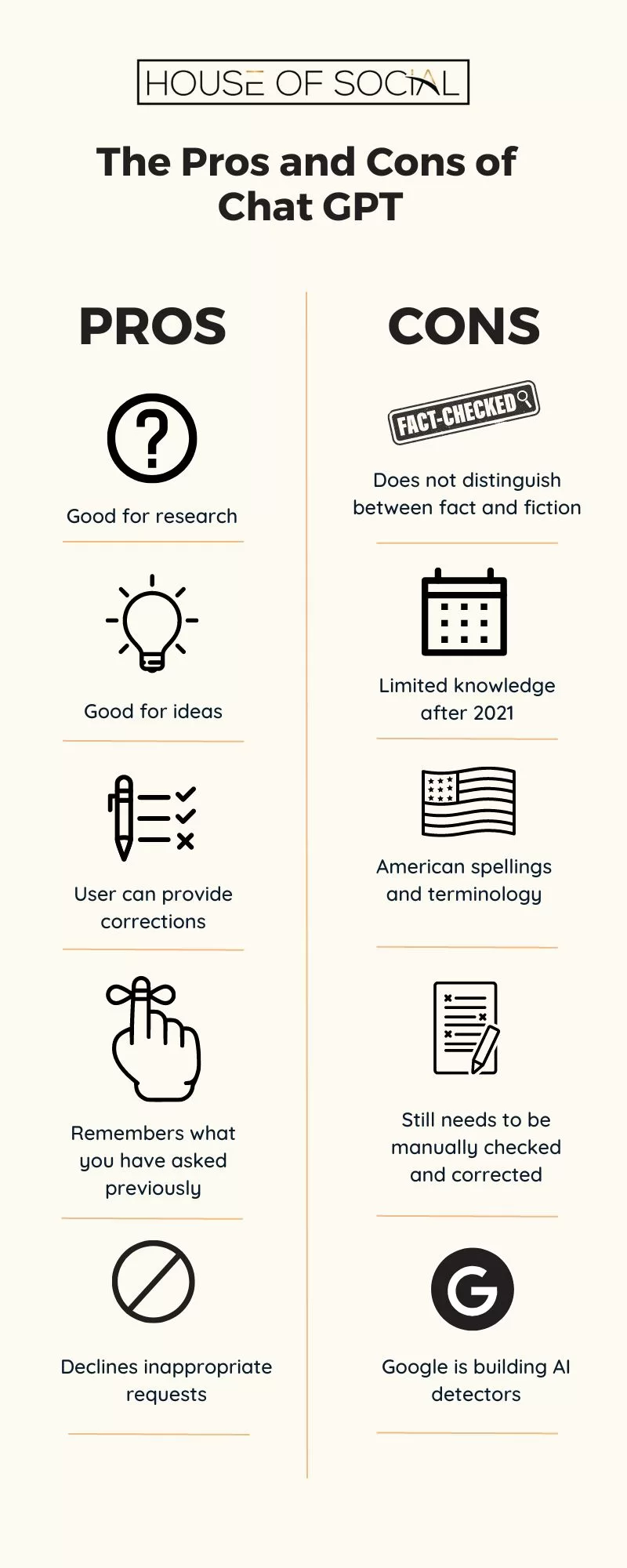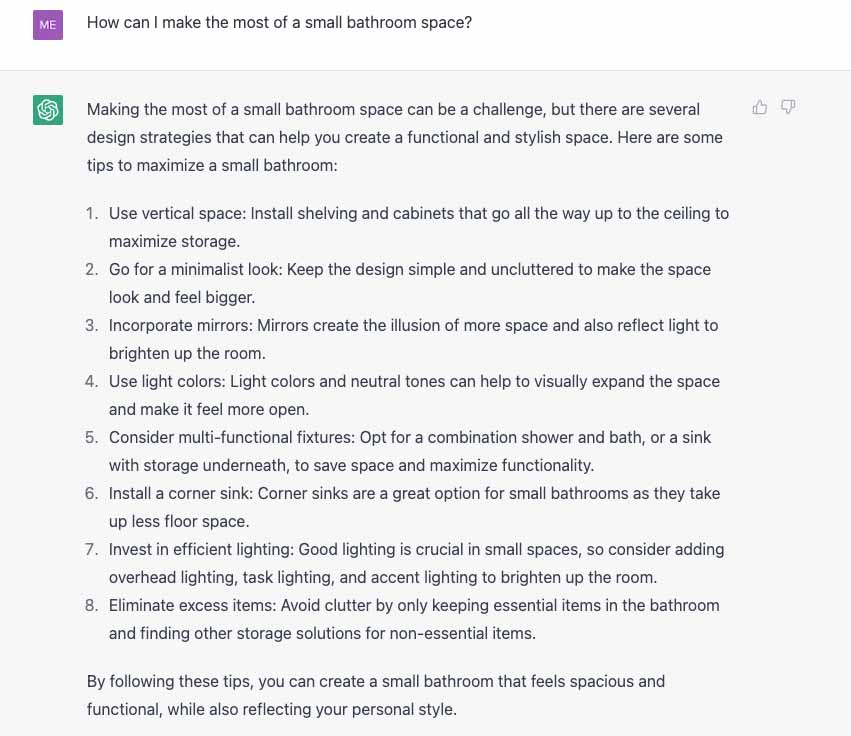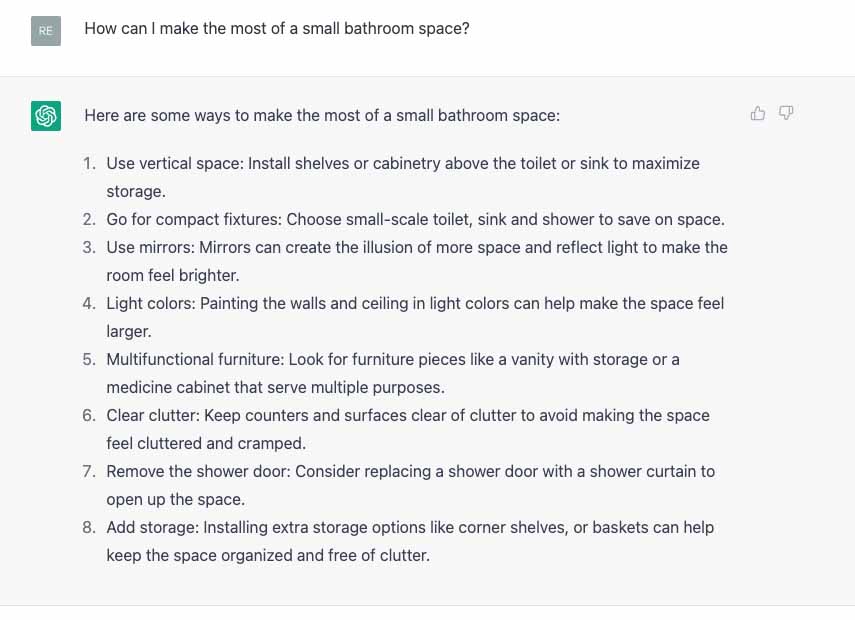By now you’ve probably all heard about ChatGPT – the automated system that can produce copy on practically any subject. The technology scours the internet and “learns” what it can from what has already been published in order to produce text in response to a question or prompt.
We asked the experts at House of Social for their take on this new technology and whether it is likely to have an impact in our industry. Here’s what they said:
ChatGPT stands for Chat Generative Pre-trained Transformer and it works on a predictability model that allows it to combine words and phrases in a meaningful way. It has been touted as a “solution” to paying copywriters so we thought we’d take a look into this technology to see if it really might take over our jobs one day.

First, let’s start with what you need to be aware of. Once you sign up and go through the verification process, you’ll hit a landing page on which there are a number of disclaimers. While ChatGPT claims capabilities around remembering what the user has asked previously, allowing the user to provide corrections and being able to decline inappropriate requests, it’s important to note that the item at the very top of the “Limitations” list is “may occasionally generate incorrect information”. Other limitations include “may occasionally produce harmful instructions or biased content” which we find a bit concerning.
By far the most pertinent limitation is that Chat GPT only has limited knowledge of world and events after 2021. Which means, of course, that if you are needing articles on current events or newsworthy items you’ll be out of luck.
So, let’s look at how ChatGPT performed when asked to produce less date-specific content. We started easy by asking it to generate a social media caption for a café. Here’s what it came up with: “Savor the moments, one sip at a time 🍵 Come visit us and treat yourself to a delicious cup of coffee or tea in a cozy ambiance 💖 #CafeVibes #CoffeeLovers #CozyCorner”
As far as captions go it’s fairly boring and innocuous but the first thing to note is that it only produces content in American spellings, so you will still need to manually go through the text and change it to Australian.
The second thing we noticed is that it uses a lot of words to say not very much of anything specific. This is the main challenge with this type of technology – in order to be able to produce content on a wide range of topics, it has to keep most of the content very generic. And this isn’t great for social media where you want your caption to grab immediate attention and engage with your audience.
We then thought we’d try a general article subject. We asked ChatGPT to tell us “how can I make the most of a small bathroom space?”.
Again, the article featured American spellings and it also automatically uses American terminology such as remodel instead of renovate. So, another manual process is needed to check for correct word usage.
In terms of the actual content – well, it wasn’t incorrect but that’s about as positive as we can be about the results. The actual answer was incredibly generic and when another team member asked the same question the content was practically identical (see screen shots above). Yes, the ChatGPT did produce different words for the second result but the answer was nothing new or original.
This is important because Google has been quick to respond to this new technology and has announced that it is building AI that can detect this type of generic response and will treat it similarly to plagiarised content. So, the real benefits may quickly be limited if Google starts demoting this type of “duplicate” content.
While ChatGPT might be really useful for research, for example, we feel it would still be necessary to have someone with the relevant skills and knowledge to take that research and turn it into something that is relevant for a specific business. You will also need someone with an understanding of spelling and grammar to be able to pick up on what needs tweaking and be able to effect the changes required.
You will also need someone who understands your industry and your business to be able to add in the pieces of content that turn the caption or article or website copy into something that’s unique for your business.
So, our verdict: even allowing for the fact that we are always going to view this type of AI with a negative viewpoint, it’s not a system that we see as a current threat to the copywriting arm of our business. The technology might be capable of learning but it will be difficult for it to detect nuance or absorb specific facts about particular businesses in order to produce copy that is an accurate reflection of that business.
If you’d like to talk all things Social Media – visit houseofsocial.com.au/contact-us/





































